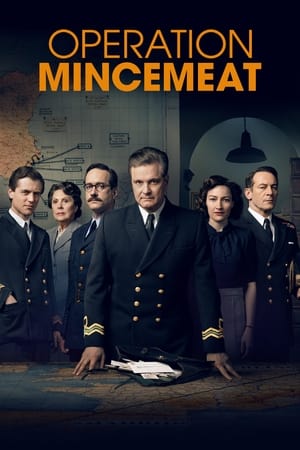
If movies are magic, and magic is misdirection, then…well, you can finish the syllogism yourself. Few things are more satisfying than discovering that apparent miracles have been performed with the left hand while our attention was drawn to the right, and learning in detail exactly how the sleight of hand (or eye) was achieved can be a profound pleasure of its own. (Penn & Teller built much of their early career on violating the so-called magician’s code, first fooling the audience and then revealing the trick’s mechanics.) This is true of films that don’t necessarily involve what we think of as magic at all—Ocean’s Eleven, for example, is structured as a lengthy series of heist preparations that deliberately withholds any explanation of how each component will work, building to a seemingly impossible switcheroo that’s then retroactively demystified. Hell, even the basic screenwriting dictum that a story’s conclusion should be at once unexpected and inevitable involves some degree of faking the viewer out.
Operation Mincemeat is a stolidly straightforward account of World War II’s most remarkable real-life fakeout, and fascinating precisely to the degree that it revels in step-by-step instructions on how to convince the enemy that you’re about to invade Greece when you’re in fact about to invade Sicily. Executed over the first half of 1943, Mincemeat was devised by MI5 officer Charles Cholmondeley (Matthew Macfadyen)—in typical British fashion, his surname is somehow pronounced “Chumley”—and overseen by Naval Intelligence liaison Ewen Montagu (Colin Firth), based on one particularly grisly subterfuge possibility floated in a memo that was written at least in part (many believe in toto) by future James Bond creator Ian Fleming (Johnny Flynn), who was then the personal assistant of Rear Admiral John Godfrey (Jason Isaacs), the director of Naval Intelligence. The movie leans a tad hard on this Fleming connection, making sure we get his full name when he first appears (in a context where he’d almost certainly have been introduced simply as Lieutenant Commander Fleming), pausing every so often to nudge us about his passion for spy novels (writing them was a fad for military officers), pointing out his inspiration for Bond mainstays like M and Q. It’s all quite interesting, to be sure, but not especially relevant to the narrative, in which Fleming plays a fairly minor role.
Mostly, we spend our time watching Cholmondeley and Montagu slowly transform the corpse of a vagrant (identified decades after the war as Glyndwr Michael) into a fictional British Royal Marine, Captain (Acting Major) William Martin. Because Hitler knew perfectly well that Sicily was the Allies’ best choice for an attack, it was necessary to convince the Nazis that they’d lucked into learning of an impending campaign in Greece. The best way to accomplish this, Churchill (Simon Russell Beale) eventually decided, was via means so risky, and with such a high possibility of failure, that the Germans would have a hard time believing it to be a complicated ruse. Logistically, this involved making a months-old body appear to be a freshly-drowned officer whose parachute had failed, and having it wash ashore at a precise location on the Spanish coast where the body’s effects would likely be shared with Germany (even though Spain was officially neutral, or at least “non-belligerent”), but where the local coroner would be unlikely to examine the body itself too closely. The morgue refrigeration temperature alone—retarding decomposition without actually freezing tissue, which would be easily detectable—was a matter of considerable delicacy.
For the plan couldn’t be launched immediately. First, the British had to spend months inventing a credible human being from scratch, and Operation Mincemeat is strongest when equating this painstaking work with the creation of a literary character. (Emphasizing Fleming would be more thematically justifiable were the Bond novels more character-based.) To convince the Germans that they’d found an actual dead British officer, the body needed to be carrying credible “pocket litter,” which in 1943 meant letters, snapshots, receipts, so forth. Jean Leslie (Kelly Macdonald), an MI5 clerk, provided a mildly racy photograph of herself and helped brainstorm biographical details for this imaginary girlfriend, who they named Pam; Montagu’s secretary (Penelope Wilton) wrote Pam’s love letters to Captain Martin, using ink waterproof enough that they’d still be legible after extended submersion in the ocean but not so obviously waterproof as to be suspicious. Operation Mincemeat is procedural to a degree that doesn’t give its cast many opportunities to emote, but Firth and Macdonald, in particular, have some fun with the idea that Montagu and Leslie get carried away with fashioning what become alter egos of a sort. It’s as much related to acting as to writing, arguably, coming up with extensive backstories that help out mentally but won’t actually be used in the work.
Unfortunately, screenwriter Michelle Ashford—a longtime TV veteran (she created Masters of Sex and was among the writers on HBO’s WWII miniseries The Pacific) making what would have been her big-screen debut, had Mincemeat not been bought by Netflix in the U.S.—chose to introduce human drama that feels every bit as manufactured as it is. Suggesting that maybe Montagu and Leslie halfway fell for each other by proxy as they worked out William and Pam’s romance isn’t a terrible idea; there’s no historical evidence that anything of the sort happened, but it’s plausible enough. Ashford goes further, though, turning the movie into a low-key love triangle in which Cholmondeley constantly seethes with jealousy in the corner of the screen. Macfadyen, who’s finally found his forte playing passive-aggressive suits (on Succession, in The Assistant), retreats into the dewy-eyed insubstantiality that had long hindered him—I maintain that he’s one of the weakest Darcys we’ve ever seen, underlined here by the fact that he’s acting opposite one of the finest Darcys we’ve ever seen—and every aspect of these characters’ ostensibly tempestuous personal relationships feels like a contrived distraction. Same goes for a late-breaking threat of exposure involving Jean’s photograph and hinting at a possible contact from anti-Hitler Germans. “I doubt this actually happened,” was my primary thought as the intrigue unfolded…and, sure enough, it didn’t.
Still, Operation Mincemeat spends enough of its two hours and change detailing what did happen that it never gets dull. I do wish that the project had been entrusted to a director with more formal intelligence than John Madden (not that one), who’s best known for deservedly losing an Oscar to Steven Spielberg 24 years ago. Oddly enough, this WWII movie is probably closest to Shakespeare in Love among the films Madden has made since, what with its semi-historical blend of the creative and the romantic; mostly, though, it serves as a reminder of how purely functional his approach tends to be. It’s possible that Ashford’s dramatic embellishments—which also include a very dweeby-looking spy who trades sex for information with men and women alike—might have stood out less starkly had they been integrated more adroitly, with occasional zigs and zags; Madden just steers straight down the center of the road at all times, in the most energy-efficient way possible, which keeps things humming along but makes it impossible not to strongly register the speed bumps. He’s anything but a cinematic magician, and when Operation Mincemeat has concluded, it’s the real-life masters of deception in British Intelligence whom viewers will admire.
One of the first notable online film critics, having launched his site The Man Who Viewed Too Much in 1995, Mike D’Angelo has also written professionally for Entertainment Weekly, Time Out New York, The Village Voice, Esquire, Las Vegas Weekly, and The A.V. Club, among other publications. He’s been a member of the New York Film Critics Circle and currently blathers opinions almost daily on Patreon.






